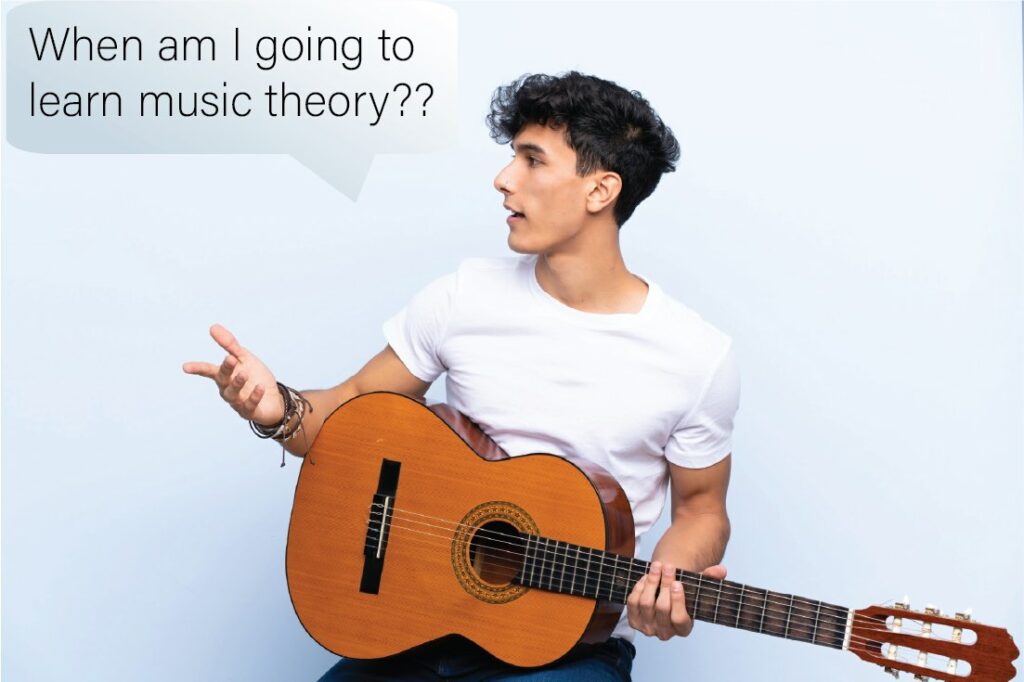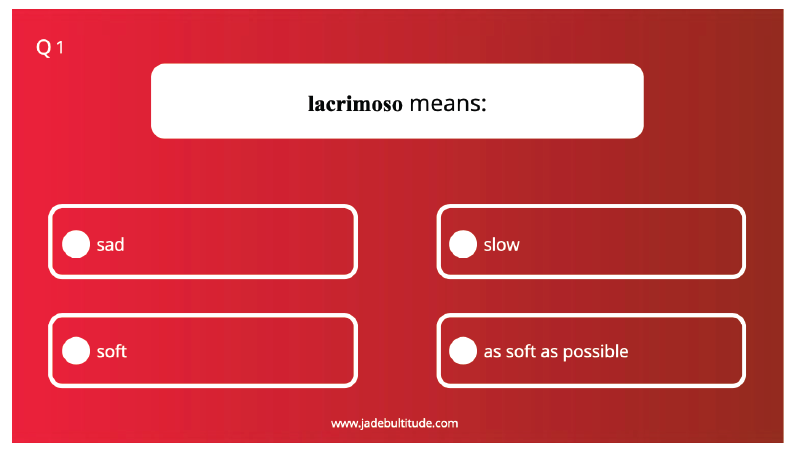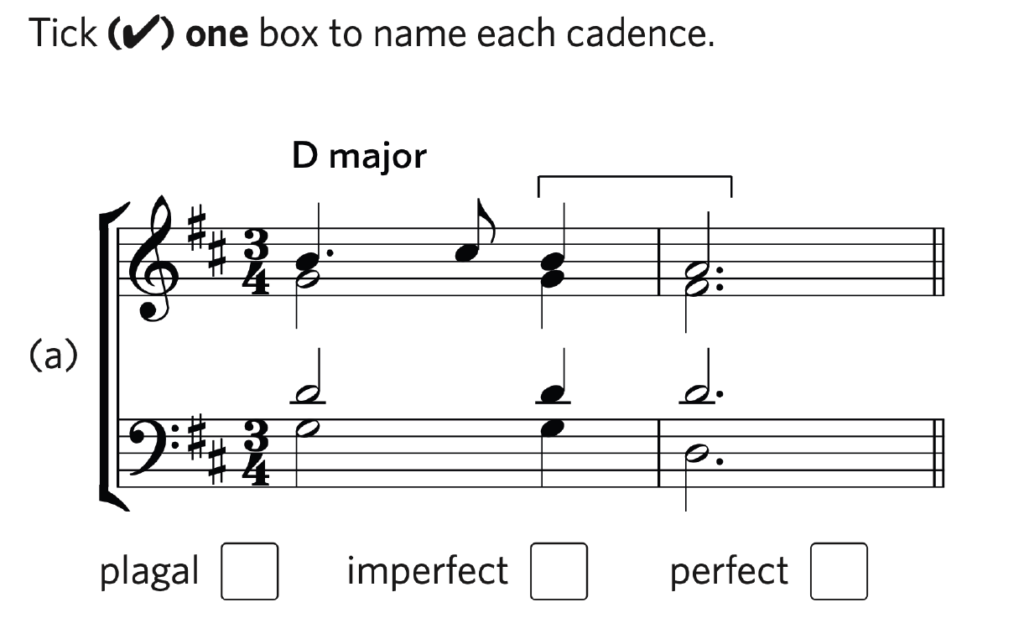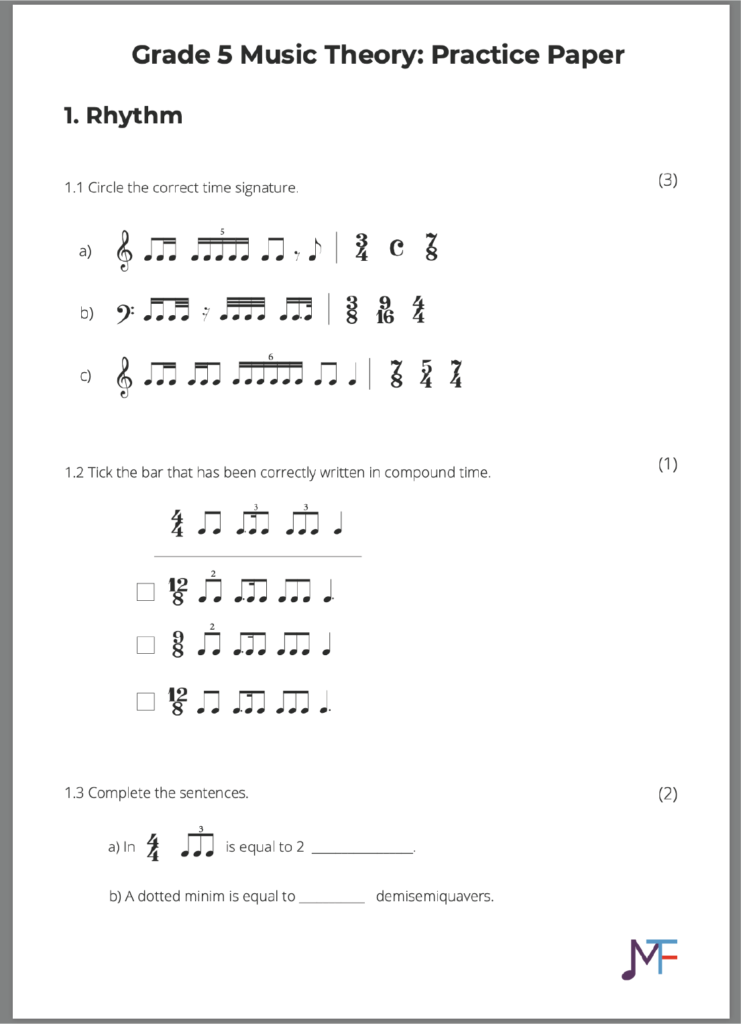As a parent it can be tough to help your child with Grade 5 Music Theory. As a musician, teacher and music theory expert, I have over 15 years of experience working with students and pupils. Here’s my top tips for how to help your child succeed at this important exam.
Is Grade 5 Music Theory hard to learn?
The Grade 5 Music Theory exam contains enough content to make it a challenge to learn and understand. However, this does depend on how much music theory your child has done before. Many teachers struggle to fit in music theory alongside teaching children how to play their instrument. This means that theory is often left until children need to pass Grade 5 to progress with their practical exams.
Picture of teacher

Know the Grade 5 Music Theory Curriculum
The Grade 5 Curriculum covers the following areas:
- Rhythm – Time signatures and grouping of notes
- Clefs – including treble, bass, alto and tenor clefs
- Scales and Key Signatures – up to six sharps and flats
- Transposition – by a major second, minor third and perfect 5th
- Intervals – major, minor, perfect, augmented and diminished. (and compound intervals)
- Chords and Cadences – learn how to recognise and label chords, figured bass and how to choose chords for a cadence.
- Instruments of the orchestra
- Voice Types
- Ornamentation
- Performance Directions
Want a complete breakdown of all the elements of the curriculum: See our complete guide here to Grade 5.
What are the trickiest concepts?
Intervals

Intervals does not really need to be tricky concept, but may students have misconceptions about it that make it tough to succeed at Grade 5. Students should be confident with intervals up to an octave for Grade 4 music theory. Grade 5 extends this with adding in intervals above an octave in size, which are called ‘compound intervals’. This is a small jump in understand, providing students have a good foundations in intervals.
Intervals also underpin a lot of other concepts, so without this students may struggle with the rest of the curriculum.
Need help with intervals, check out our post on major, minor, augmented and diminished intervals.
Transposition
This one is a tough concept as students need to be able to transpose up/down a major 2nd, perfect 5th and minor 3rd. Many students end up transposing one note at a time, which is a really inefficient. Instead, pupils should be transposing the key signature and then moving up/down all the notes of the piece. (Remember: if there are accidentals in the music, these will still need to be transposed individually).
For more on this method see our post for transposing up a minor 3rd.
Here is a typical transposition question:

Performance Directions
Learning all of the performance directions can be a pain for any student. Grade 5 includes Italian, German and French terms and there are a lot of them! Regular practice is the key to success here as it’s tough to cram these into your memory quickly. For this reason I have created performances directions quizzes for grades 1-5 which will make learning them a little easier.

Grouping Notes
This one requires students to have a good understanding of different time signatures and the concept of ‘strong beats’. If we have a bar in 6/8, we need to understand that we will have two strong bats per beat. Each of these strong beats will be worth a dotted crotchet and we will count one…and..a….two…and….a….one….and…a….two….and….a….etc.
Notes are grouped according to strong beats. This means we need to understand this concept (for all or the main time signatures) to answer questions on rests and grouping.
For more info on this, see our post on Grade 5 time signatures.
Here is a typical grouping questions from the grade 5 exam.

What is the Grade 5 Music Theory Examination Format?
ABRSM Grade 5 Music Theory is an online exam that can be taken at any point throughout the year. For the official guidelines, see the ABRSM website. Have a look at the exact style of the exam, check these 10 practice questions from ABRSM.

How can I help my child with Exam preparation?
It can be a challenge to help your child, especially if you have not studied yourself before. There are resources that you can buy to help your child (see the next sections). Free practice papers can also test your chid’s understanding and give a sense of the timing of the exam. ABRSM has free practice paper and I have also written a free practice paper with answers to help students.

What resources can help?
Courses
There are a variety of online and zoom-based courses available for grade 5. These can be really useful as often music teachers find it tough to fit music theory in to normal lessons. They are trying to teach children to play their instruments and it doesn’t leave much dedicated time for theory. This is where a specific course can be useful.
If you are thinking of an online course, make sure you check the amount of support and the length of the course. Many ‘crash courses’ can be very short and may need extensive work beforehand so that your child is ready for the content.
If you want your child to be able to learn Grade 5 at their own pace and have support whenever they need it, have a look at my complete Grade 5 Music Theory course. It contains high-quality videos, worksheets with answers and online assessments and practice exams. There is also a forum and weekly Q and A so it feels like having a music theory teacher on hand 24/7.
Books
There are a number of high-quality textbooks that students can use. ABRSM have an official book which gives a brief explanation and practice questions on each topic. For a list of the top resources, check out our grade 5 books post.
If you want more detailed explanations then I have my own book, Music Theory Foundations, available as paperback and ebook.
Apps
There are a few apps that can be useful, although it has to be said that they won’t get the job done on their own. Here are my recommendations:
ABRSM Music Theory Trainer– Gives quiz-like exercises for Grade 1-4.
Theory Lessons -This is from musictheory.net and gives concise explanations of different theory concepts.
